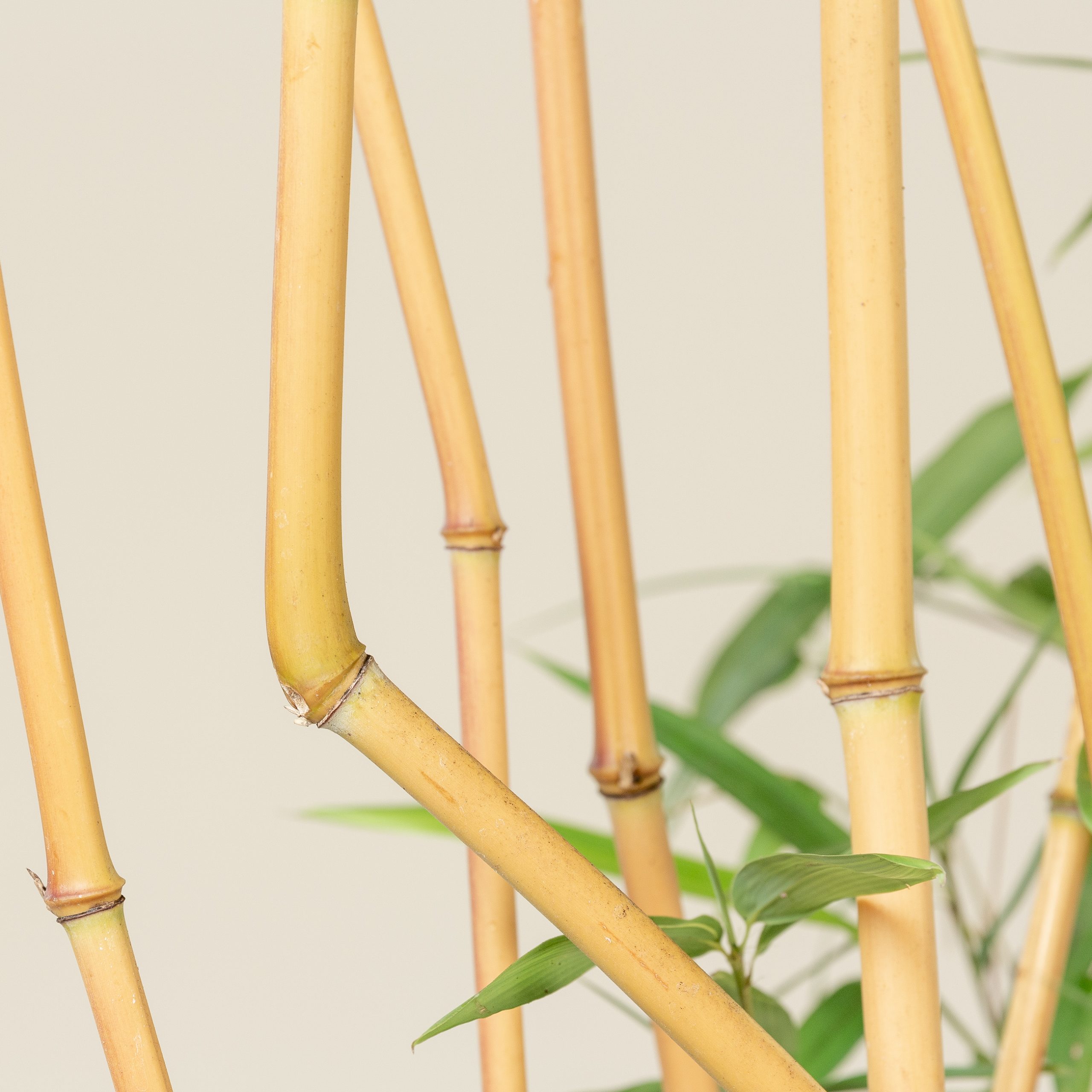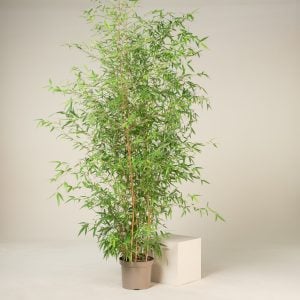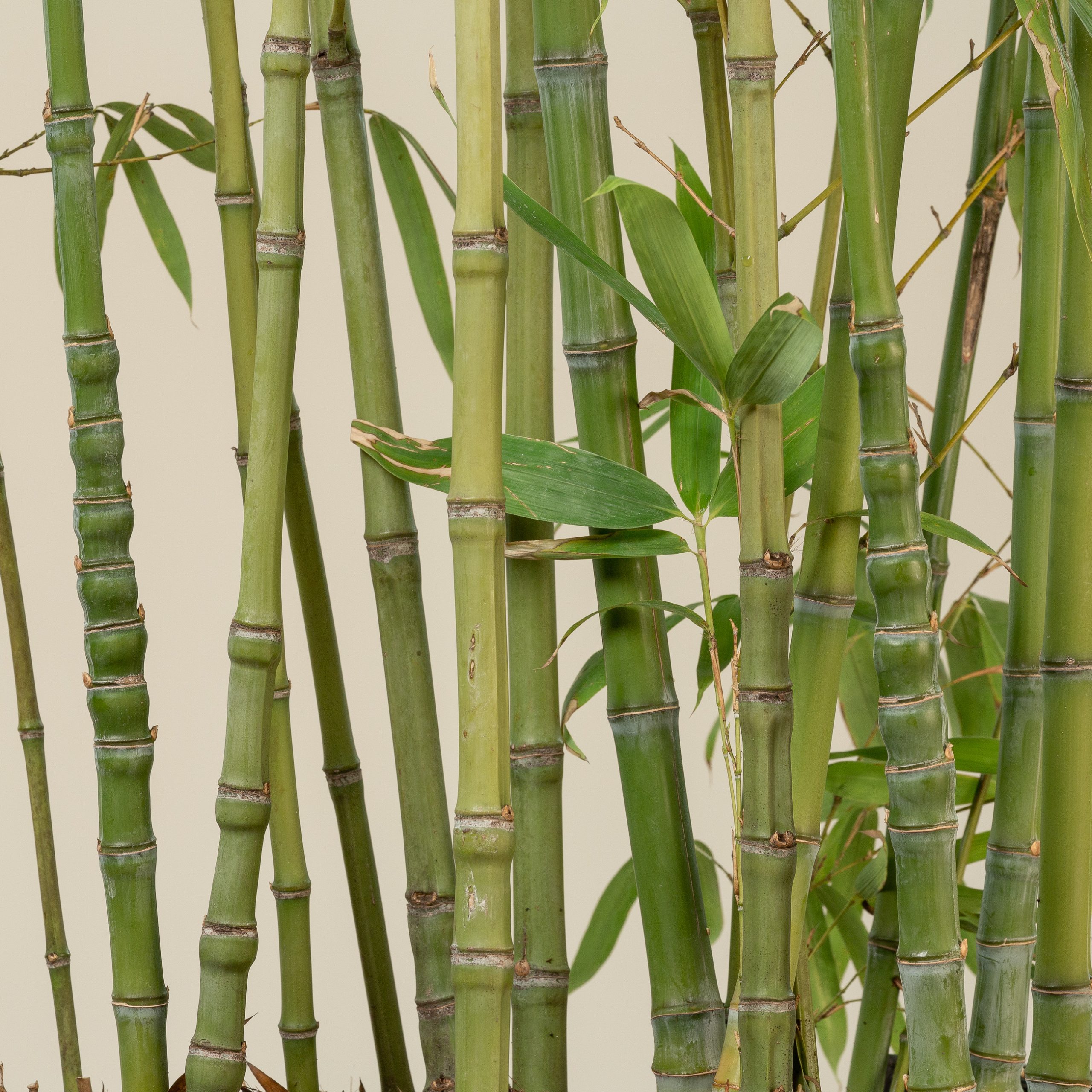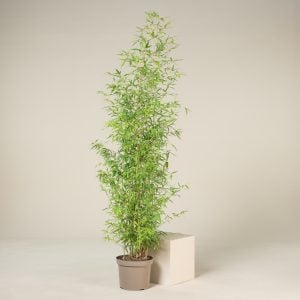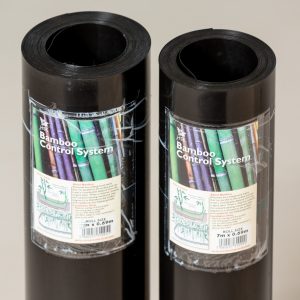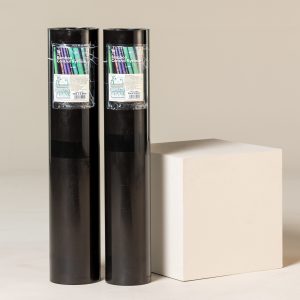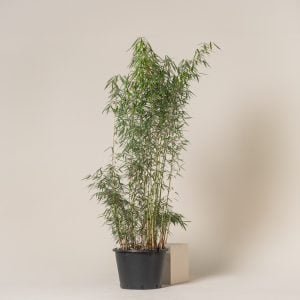We frequently get asked about using bamboo as a screening plant, often when neighbours have built an extension and some additional privacy is required.
Here we explain your options for using bamboo, the best species to choose, the do’s and do not’s, as well as practical tips for planting and ongoing care.
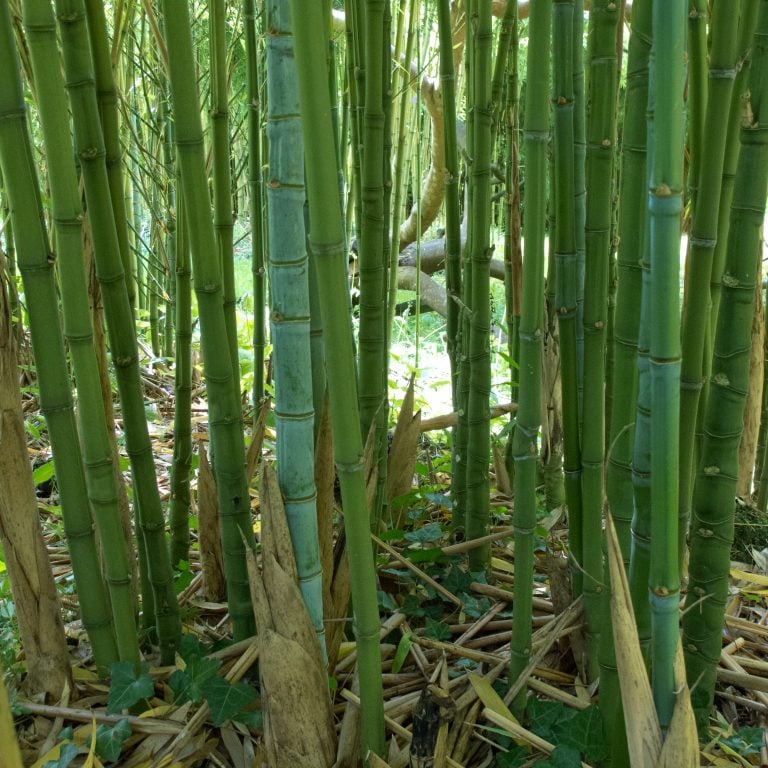
Running or Clumping?
Generally speaking, bamboo can be divided into two categories: running and clumping:
- Running bamboos will send out underground stems (rhizomes) horizontally, sometimes travelling many meters from the original plant, before sending up new growth elsewhere.
- Clumping bamboos form (as the name suggests) a tight clump which gradually expands outwards but in a more restricted and compact fashion.
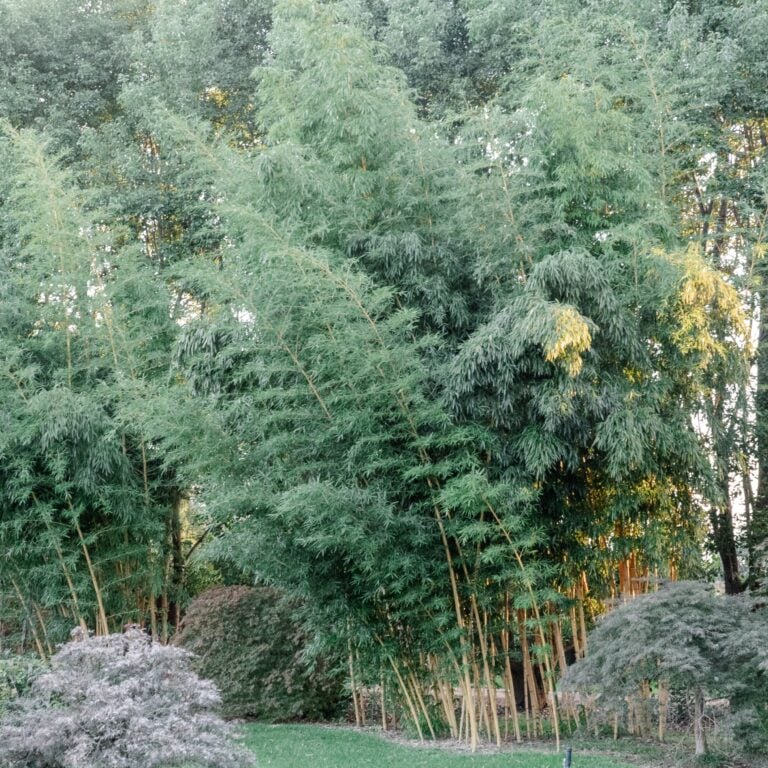
Running Bamboo
Example species
- Phyllostachys aurea
- Phyllostachys nigra
- Pseudosasa japonica
Benefits
- Quick to form a screen
- Generally taller and more upright
Considerations
- Requires a root barrier if planted in the ground
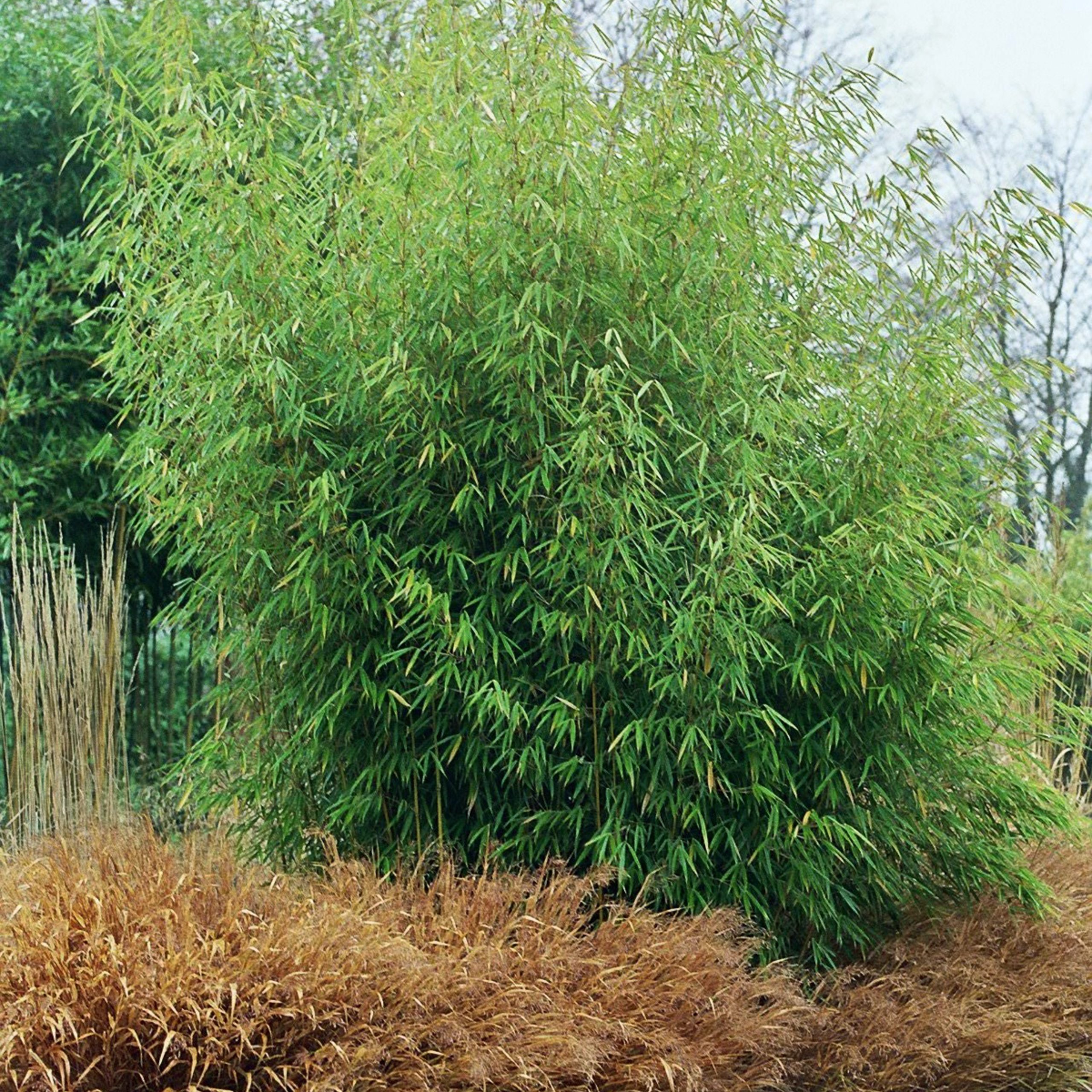
Clumping Bamboo
Example species
- Fargesia robusta
- Fargesia rufa
Benefits
- Does not require root barrier
- Creates a softer, fountain shape
Considerations
- Slower to form a screen
- Should not be planted close to structures
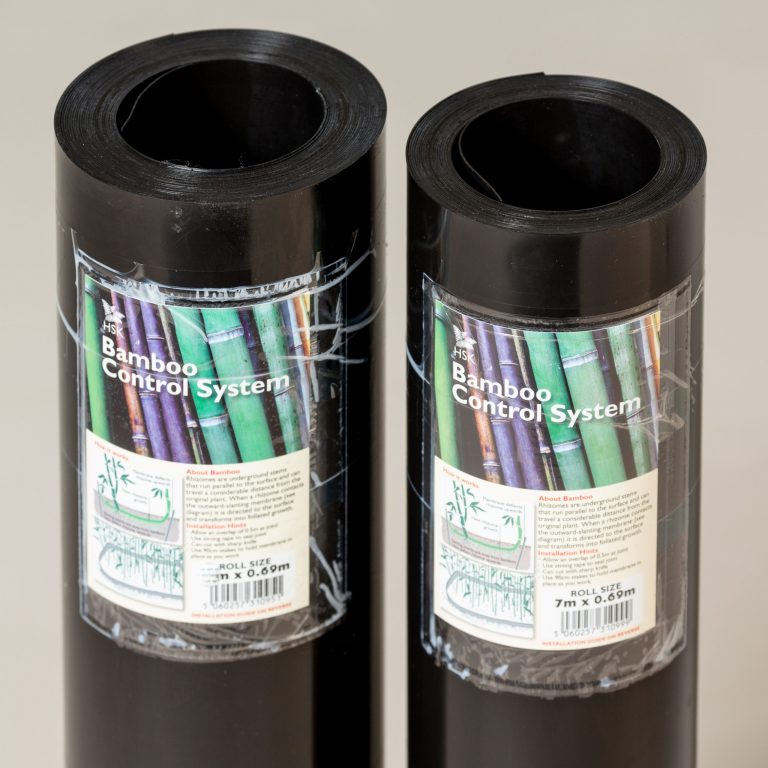
Root Barrier
A root barrier is a physical barrier that is placed around the bamboo to prevent its roots from spreading beyond a certain point.
There are several types of root barriers available, including plastic, metal, and concrete. The most effective type of root barrier for Phyllostachys bamboo is a high-density polyethylene (HDPE) plastic barrier. This type of barrier is durable, flexible, and resistant to cracking, which makes it ideal for use in areas with heavy clay soils. When installing a root barrier, it is important to ensure that it is at least 60cm deep and extends 5-10cm above the soil surface to prevent the bamboo from spreading over the top.
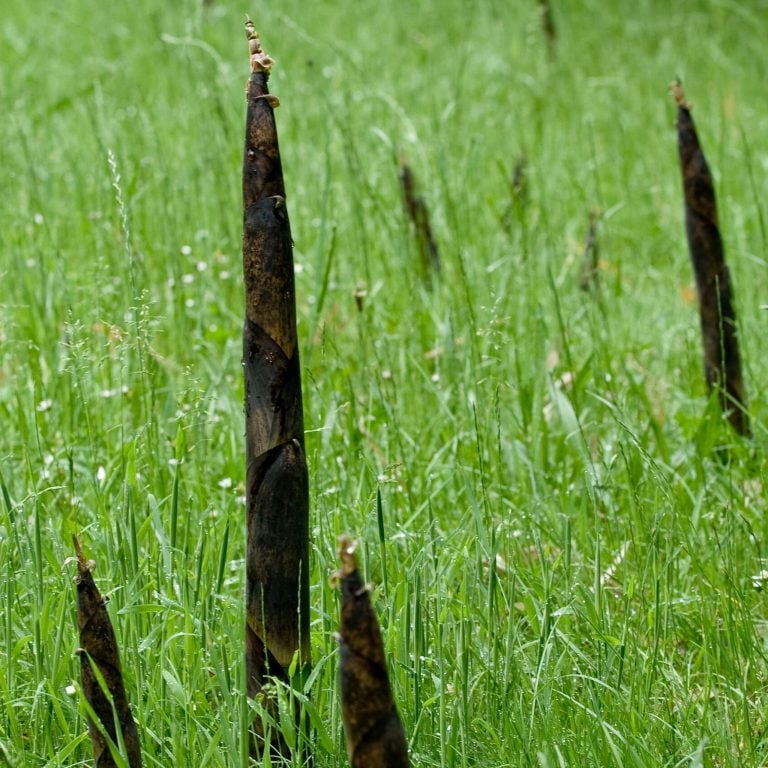
Do I need to use a root barrier?
If you are planting a clumping bamboo (e.g. Fargesia) then the answer is no. However if you are planting a running species such as Phyllostachys, the answer is a definitive YES. Running bamboos planted in the ground may behave very well for the first few years as they settle in, but eventually they will start to send out rhizomes in all directions.
If you plant a running bamboo, you may be liable for the subsequent costs of removal and remedial work if it escapes into a neighbouring property.
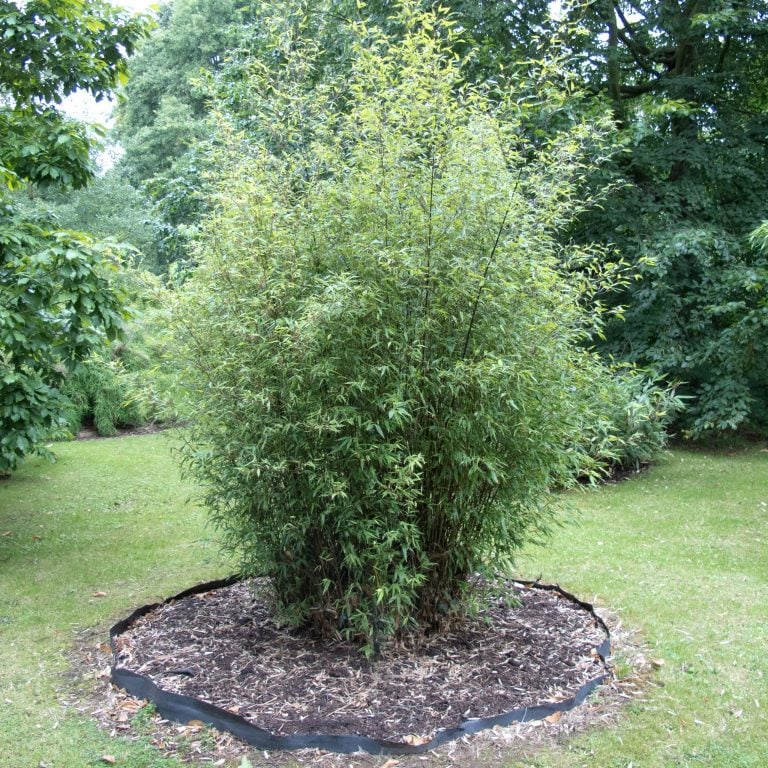
Installing root barrier
Installing a root barrier is easy when you know how. Read our separate article which has all the information you need, along with diagrams and an instructional video:
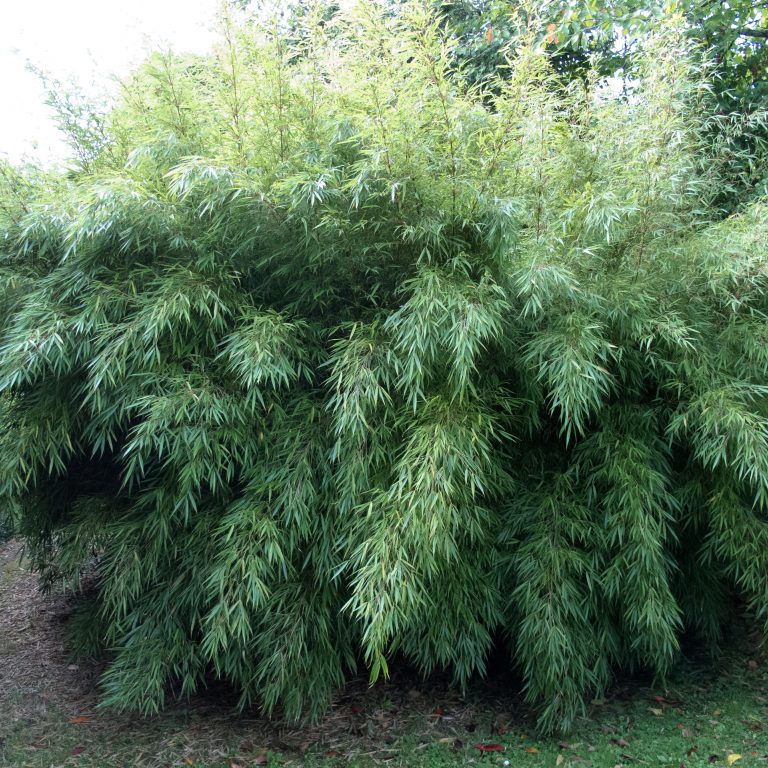
Can I plant bamboo close to a wall?
Clumping bamboos must be planted at least 1.5 metres from walls. As the clumps mature, the outward pressure can push against the foundations and cause damage. For situations where you need to plant closer to a wall, consider a running bamboo (with root barrier) or plant in a container (see below).
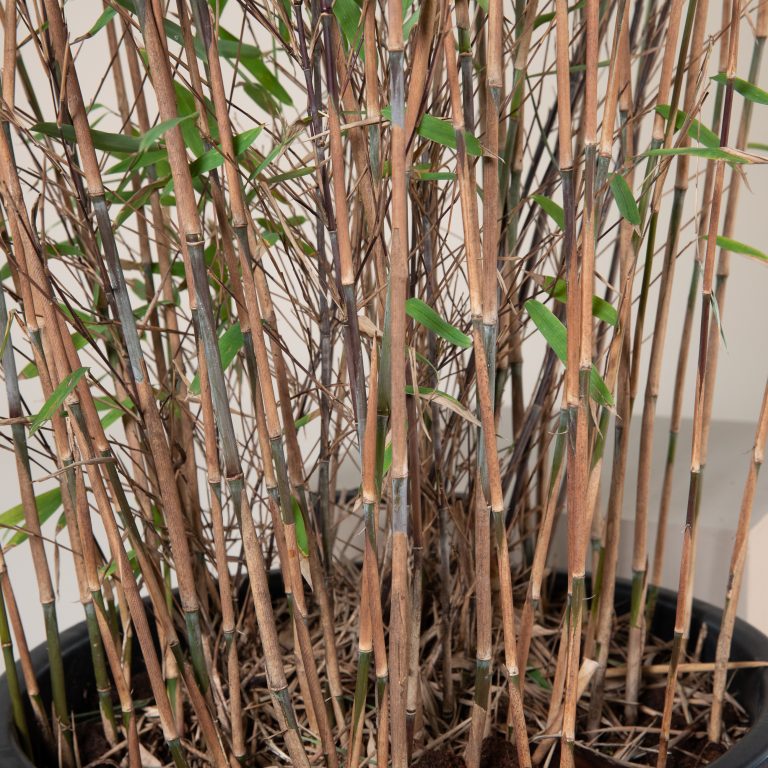
Can I plant bamboo in a container or raised bed?
Bamboos can grow quite happily in the right container but there are several points to consider:
- Choose the largest container possible. Most bamboos will start to look very unhappy after a couple of years in a small container. You should be looking for containers with a minimum diameter of 70cm, ideally larger. For troughs, you need to look for a minimum dimension of 100cm long x 40cm wide x 45cm high.
- Bamboos (especially clumping ones) will create a lot of pressure inside the pot over time. Ceramic pots can easily crack after several years so be prepared to replace pots in the longer term.
- If you are building a raised bed for your bamboo, you still might want to install a root barrier. If the rhizomes can access the open soil, there is a strong likelihood that they will spread.
- Bear in mind that bamboos will require regular watering and feeding in containers (see below).
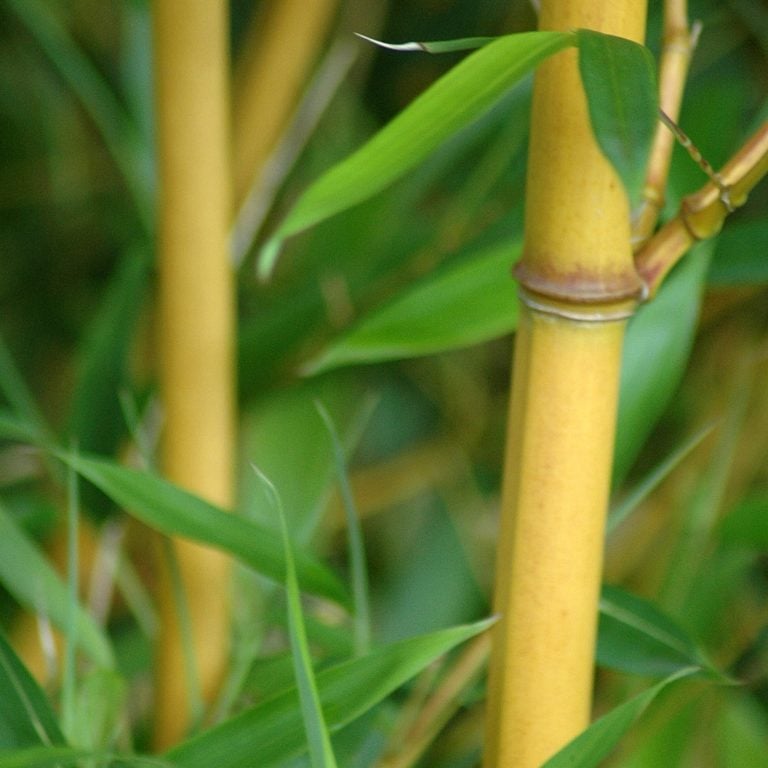
How many plants do I need?
Planting density depends a lot on the type of bamboo you’re planting, but as a general rule, if purchasing plants in 12 litre pots, one plant per metre or 3 plants per 2 linear metres is sufficient.
If you have little patience and you need an instant effect, then 2 plants per metre. The bamboo must be planted slightly lower than the surrounding ground.
Consider more plants per linear metre in the case of clump forming bamboo species.
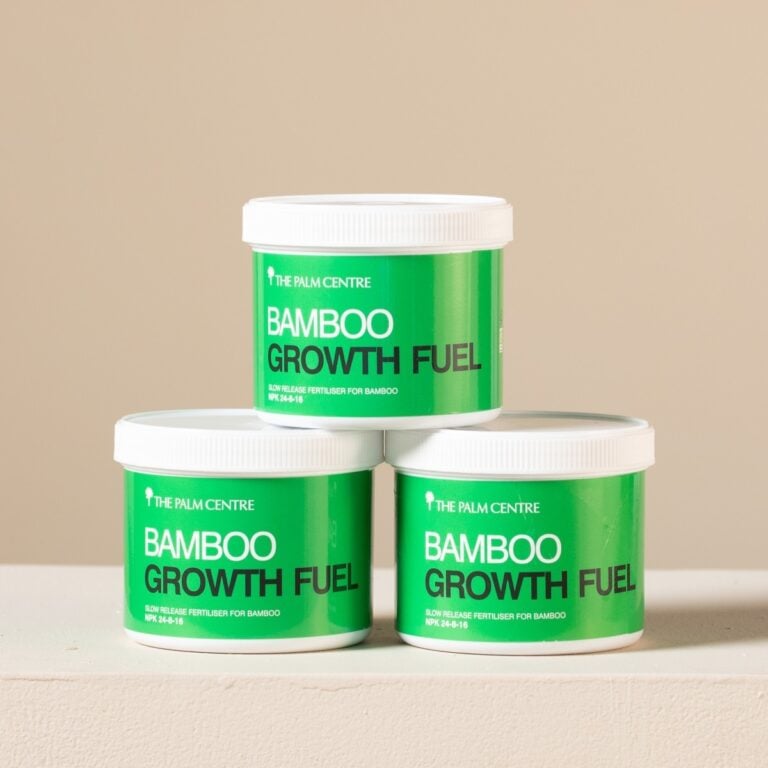
Some other important points…
Bamboo benefits from regular irrigation. If you don’t have an irrigation system installed, be prepared to water your bamboo well during dry spells, especially for the first year after planting.
Likewise, bamboo will look its best when it is getting regular fertiliser. We manufacture a slow-release bamboo growth fuel which is easy to use. Simply sprinkle a handful around the base of each plant in April and again in September.
